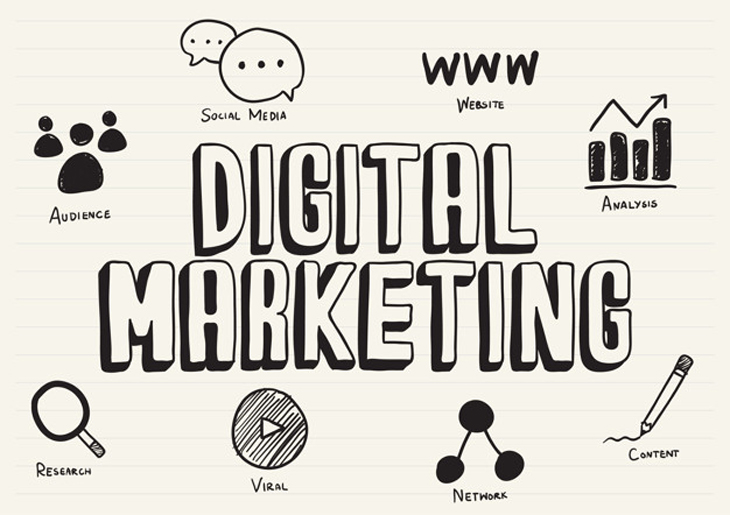In today’s digital-first world, influencer marketing is no longer just for big cities and global brands. It has found an exciting new frontier—local influencer marketing in small cities. Brands, especially local businesses, are leveraging micro and nano influencers to build powerful connections within their communities. This strategy offers high engagement, cost-efficiency, and a deeper cultural resonance that national campaigns often miss. These evolving trends are now at the heart of many Digital Marketing Courses in Pune, helping professionals stay ahead of the curve.
Small cities are becoming hubs of opportunity where businesses can dominate local markets by collaborating with influencers who know their audience inside and out. But what exactly is local influencer marketing, why does it work so well in smaller cities, and how can brands use it to grow?
Let’s explore.
What Is Local Influencer Marketing?
Local influencer marketing involves collaborating with individuals who have a strong, loyal following within a specific geographic area—often a small city or town. These influencers may not have millions of followers, but they possess strong credibility and trust within their local community.
Influencers in this space can be:
- Local food bloggers
- Fashion enthusiasts with city-centric followings
- Fitness trainers at neighborhood gyms
- Lifestyle content creators covering regional topics
- Students or professionals active on Instagram or YouTube
The goal is to reach a targeted audience with personalized, relatable content that reflects the community’s values and preferences.
Why Small City Influencer Marketing Works So Well
- High Engagement, Low Noise
Unlike big cities, where users are constantly bombarded with content, smaller cities offer less saturated markets. This means influencer content often has higher engagement rates, as followers are more likely to know the influencer personally or see them as part of their everyday life.
- Authenticity and Trust
In tight-knit communities, authenticity is everything. Local influencers are viewed as peers rather than celebrities. Their recommendations are perceived as genuine and trustworthy, leading to stronger conversions and long-term loyalty.
- Cost-Effective Campaigns
Big-name influencers often charge massive fees. In contrast, local influencers typically charge lower rates—or may even work in exchange for free products, services, or local exposure—making influencer marketing accessible for small and medium businesses.
- Community Relevance
Local influencers understand cultural nuances, local slang, traditions, and events. This makes their content hyper-relevant and allows brands to speak directly to their community.
- Immediate Offline Impact
Local campaigns often result in immediate real-world outcomes: increased foot traffic to stores, higher attendance at events, and faster word-of-mouth referrals.
Who Can Benefit From Local Influencer Marketing?
This approach works especially well for:
- Cafes, restaurants, and food delivery apps
- Retail stores and boutiques
- Local salons, spas, and fitness studios
- Event planners and wedding services
- Coaching centers and education platforms
- Real estate agencies and interior decorators
- Healthcare providers (clinics, dental offices)
Essentially, any business that operates within a geographic radius can benefit from tapping into the power of local influence.
Step-by-Step Guide to Dominating Small Cities with Local Influencer Marketing
Step 1: Define Your Goals
Start by determining what you want to achieve. Do you want:
- Brand awareness?
- More foot traffic?
- Social media followers?
- Product sales?
- Event attendance?
Having clear KPIs helps measure the success of your campaign.
Step 2: Identify the Right Influencers
In small cities, follower count is less important than relevance and authenticity. Focus on:
- Engagement rate: Are people liking, commenting, and sharing their posts?
- Content relevance: Do they post about your industry or niche?
- Audience demographics: Do their followers match your ideal customers?
- Geographical relevance: Are most of their followers from your city or nearby?
Use tools like Heepsy, Upfluence, or simply search hashtags and location tags on Instagram or YouTube.
Step 3: Build Genuine Relationships
Approach influencers respectfully. Personalize your outreach message, acknowledge their work, and explain how a partnership could benefit them and their followers.
Pro Tip: Offer something of value before asking for promotion—like a free trial, gift voucher, or exclusive access.
Step 4: Co-Create Content That Resonates
Allow influencers creative freedom while providing guidelines about your brand’s tone and goals. The content should be:
- Authentic and non-scripted
- Localized (mentioning landmarks, festivals, or local culture)
- Visual and mobile-optimized
- Shareable (reels, stories, shorts, etc.)
Ideas include:
- Product reviews
- Behind-the-scenes tours
- “A day in the life” vlogs
- Polls or Q&A sessions
Step 5: Promote and Amplify the Content
Don’t just leave it to the influencer. Amplify their content by sharing it on your own channels, running paid ads (with permission), and integrating it into newsletters or your website.
User-generated content (UGC) builds credibility and expands reach.
Step 6: Track Performance
Measure:
- Reach and impressions
- Engagement (likes, shares, saves, comments)
- Website clicks or landing page visits
- Sales conversions
- Use of promo codes or affiliate links
Use tools like Google Analytics, Instagram Insights, and third-party platforms like Bitly or UTM codes.
Success Stories from Small Cities
- Local Cafe in Nashik
A neighborhood cafe collaborated with 10 local micro-influencers who had between 5K–20K followers. Over a weekend, they posted reviews, location tags, and Stories. The campaign resulted in a 60% increase in walk-ins and 400+ new Instagram followers in just three days.
- Fashion Boutique in Indore
A boutique partnered with local fashion students who were budding Instagram influencers. They showcased styling videos using store inventory. Sales rose by 35% that month, with minimal spending on ads.
- Yoga Studio in Coimbatore
The studio gave free trial classes to local wellness bloggers. Their reviews brought in 75 new sign-ups within two weeks and significantly boosted online visibility.
Mistakes to Avoid in Local Influencer Marketing
- Focusing only on follower count
- Ignoring the influencer’s audience location
- Being overly controlling with the content
- Neglecting to track ROI
- Not leveraging UGC across other channels
Avoid these to ensure your campaign runs smoothly and effectively.
Emerging Trends in Local Influencer Marketing (2025 and Beyond)
- AI-Powered Influencer Discovery
Advanced platforms now use AI to analyze local influencers’ engagement, audience demographics, and trust score—making influencer identification smarter and faster.
- Voice and Vernacular Influence
With growing internet penetration in Tier-2 and Tier-3 cities, vernacular content is booming. Influencers who create content in regional languages are rising stars for hyperlocal targeting.
- AR Filters and Branded Effects
Augmented Reality (AR) filters on Instagram and Snapchat are being used to promote local businesses in fun, interactive ways.
- Nano-Influencer Campaigns
Influencers with under 5,000 followers, often considered “nano-influencers,” are seeing higher engagement rates and are perfect for ultra-local promotions.
Local Influencer Marketing vs Traditional Advertising
| Factor | Local Influencer Marketing | Traditional Advertising |
| Cost | Low to Medium | High (TV, newspapers, etc.) |
| Engagement | High (comments, shares) | Low (one-way communication) |
| Targeting | Hyper-local and niche | Broad and general |
| Trust Factor | High – peer recommendations | Low – viewed as brand messaging |
| Content Longevity | Long-lasting on digital platforms | Short shelf life |
It’s clear that local influencer marketing offers more personalized, scalable, and cost-effective advantages, especially for businesses in smaller cities.
Conclusion
Local influencer marketing is no longer an optional experiment—it’s a powerful strategy that can help small businesses dominate their local markets. By collaborating with the right influencers, creating authentic content, and nurturing community engagement, businesses in small cities can achieve tremendous growth and visibility without massive budgets.
The future is local. The brands that recognize and harness this shift early will build stronger customer relationships, lasting loyalty, and higher ROI.
And for those who want to gain hands-on experience with strategies like these, enrolling in one of the top-rated digital marketing training institute in Pune can help. You’ll learn how to design, execute, and scale influencer campaigns that truly resonate in today’s hyper-connected, mobile-first world.

